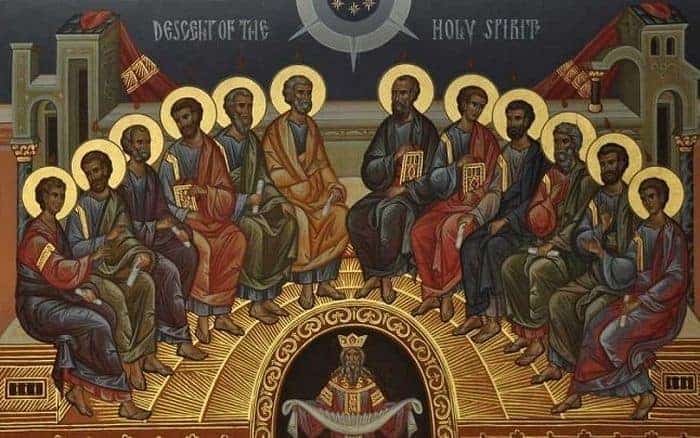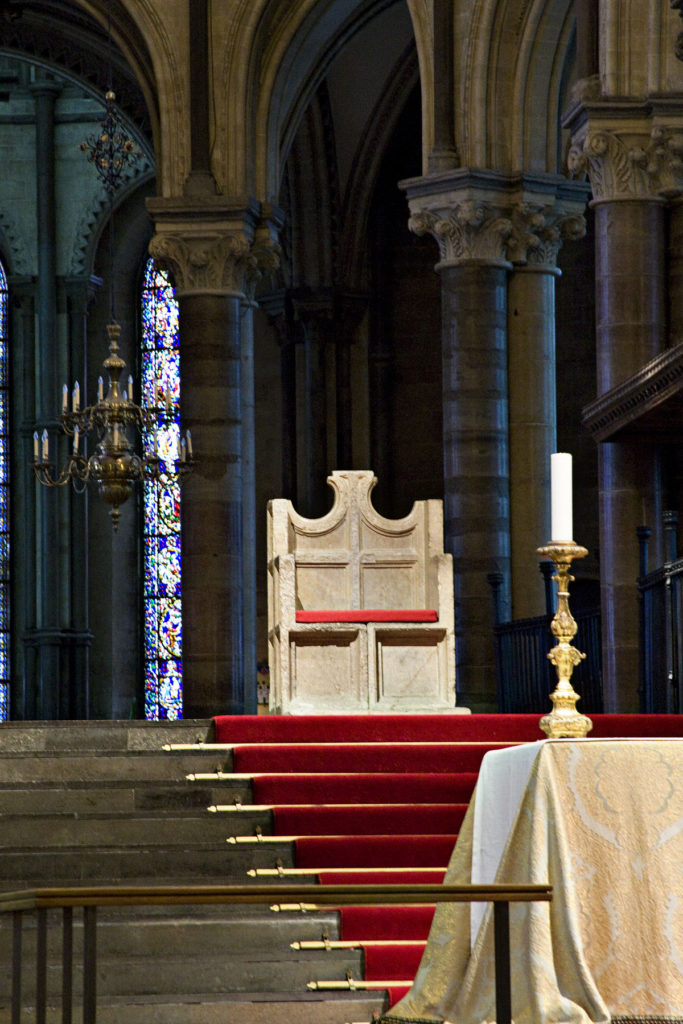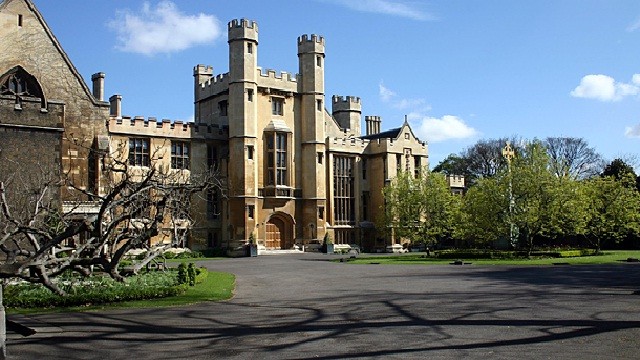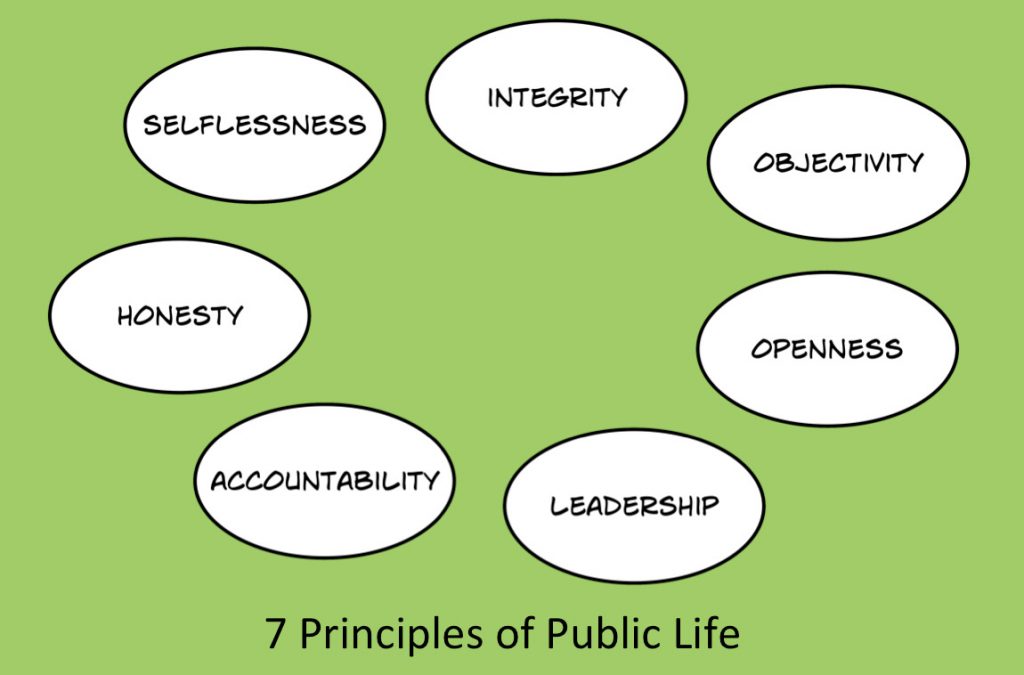
One of the important tasks for a parish priest, or anyone involved in Christian instruction, is to help a learning group, like a confirmation class, to deal with symbolic language. Leaving symbolic language to interpret itself without any explanation is a recipe for confusion in a young mind. We have recently been celebrating the feast of the Ascension. This event, told in profoundly symbolic language, cries out for interpretation so that we can make some sense of the text and what it is trying to tell us. We also need to explore the heavily symbolic language of other parts of the Bible, including the Book of Revelation. Young minds can, I believe, cope with the insight that says that symbolic language is a distinct way of communicating truth. In using it we are not committing ourselves to a belief that heaven is somewhere above the clouds. Some conservative teaching about the Bible seems to force the young person to believe that there is no other of dealing with symbolic language. It has to be either literally true or false. I have not come across any conservative teaching which explores a more nuanced way of approaching the issue of symbols in Scripture. Binary ways of thinking seem to be built into the conservative approaches to the Bible. Such dogmatic assumptions and beliefs by a whole swathe of conservative Christians will lead to an insistence that the story of Jesus ascending into the sky (like Elijah before him) has to be believed as a physical event in front of eyewitnesses. Liberal Christians want to affirm that the language about God and his self-revelation is not always told in the language of historical fact. Quite often, the language of symbols is used to evoke truth and divine reality which defy the use of words. Factual statements we call scientific represent a genre of discourse which only works in certain settings. The important issue for us now is to help our fellow Christians to know that there are alternative understandings to the notion of Jesus literally ascending into a cloud. We are not required to follow the ancient writers in their ideas about the nature of the universe and the precise physical location of the Risen /Ascended Christ.
Teaching about symbols and the way that they can communicate truth to us in the Bible and elsewhere, is, I believe, a vital part of Christian formation. One of the privileges of my own theological formation was to spend 10 months among the Orthodox in Greece and elsewhere. I learnt many things through this exposure to a different cultural form of Christianity. Perhaps the most important thing that I learned was the ability to approach truth without depending on the analytic tools of the 18th century Enlightenment. An Orthodox worshipper does not come to church to listen to intellectual sermons. He/she comes to see. Church is a place for religious contemplation through the use of the eyes. Truth is represented largely through visual symbols. Venerating an icon and watching the highly visual drama of the Liturgy are the core means of accessing spiritual reality and the Divine mystery. Such a way of experiencing the Divine is not somehow superior to our cultural heritage. It is simply different. The traditions of the Enlightenment of course have penetrated much of modern secular Greek thought but the value of symbols as a way to encounter deeper reality remains intact within the theological traditions of Orthodoxy. Many in the West are drawn to this contemplative style of approaching truth. It is a way that bypasses the dry logical methods of Western rationalism. There are other areas of knowledge where these Western methods of knowing seem to fall short. We know from ordinary human experience that certain important human realities cannot be embraced by the language of logic or proof. Merely to observe a mother and child interacting on a park bench, is to grasp a reality that cannot be fully contained in the language of a precise verbal formulae. Love, a word which embraces human relationships as well as a fundamental attitude to the world, clearly defies definition.
It is my belief that the task of teaching all Christians, young and old, how to relate better to the rich symbolic language of hymns and scripture readings is a vital task. Trying to fit every visual, symbolic description into the straightjacket of scientific categories is clearly impossible and unhelpful. Every mature Christian should have grown out of the need to hold on to the idea that every statement is some kind of literal description of reality. We should be proud of the fact that the Christian faith and scriptures provide us with a portal into a world of profound truth. We describe this reality as transcendent and it is certainly beyond our ability to measure or control it. To tell a young teenage candidate that the word symbol is an entrance into a deeper richer world is to help them. If he/she is ever left with the idea that statements in Scripture are either literally true or false, that is immensely impoverishing. The word symbol means, literally, something which has been thrown together or connected with another reality. The word suggests absence and presence at the same time. We could, in many cases, make a translation of the word by calling it a door. The Ascension season hymns on Sunday morning were especially full symbolic language. Jesus is the one who ascends to be with his Father in a place of light and glory. How we deal with this language is enormously important. We need this language of Ascension, but we do not solve the problem of what it means by insisting that we take it literally.
The week we are in, is now building up to the feast of Pentecost. While I was reflecting during the Sunday morning’s service, I found myself making a contrast between the symbolic language of Ascension and the relatively concrete description of the coming of the Holy Spirit. Of course, we find symbolic expressions in the Acts account of the coming of the Spirit. We have the clearly symbolic language of tongues of flame. But this choice of words communicates physical realities, energy, power and heat. These words also communicate the concrete ideas of inspiration and insight. Explaining the importance of the Pentecost feast to our imaginary confirmation candidate, we might want to emphasise two key, but not necessarily religious, ideas of power and inspiration. Both these words have a currency in everyday experience as well in our moments of religious insight.
If I were having to teach about the feast of Pentecost to a congregation, I would attempt to tap into the everyday experiences of each of those listening. I would ask about their experience when they are consciously looking for guidance to do the right thing in a difficult situation. Putting aside the language of flames, wind and excitement, I would ask them to relate to the other more mundane ideas that maybe are evoked in them by the symbolic descriptions of the Holy Spirit. Most people can describe what inspiration means to them at a personal level. It has to do with the unexpected surge of energy and insight comes to us when we are open to receive it. Obviously, the word will have a variety of meanings, only some of which will be spiritual. But I suspect that when people do grapple with the word, they will find themselves not far from what Christians are talking about when they refer to the one who is the Lord, the Giver of Life. It is certainly important to link the human experience of inspiration with the whole encounter we associate with prayer and the search for spiritual guidance.
The teaching about the Spirit also brings us once more to consider the word power in a human context. We talk about power a great deal on this blog but often in its negative manifestations. But, of course, there are positive forms of human power. It is because of this power from the ‘Giver of Life’ that we understand ourselves to be both human and. at the same time, spiritual creatures. When I reflect on my own spiritual experience of power, it will link into the extraordinary way that that I have sometimes found the resources to do a particular work or overcome a particular problem which seemed at first impossible. Coming through difficult experiences and finding that I had said words which I did not know I possessed, has made me realise that the power, the energy and inspiration of the Holy Spirit is quite often around us and in us. Of course, Pentecost is a festival mainly for the whole Church. But it is also a festival for each individual Christian as he/she struggles to move forward along the Christian path. I believe in the Holy Spirit, the Lord, the Giver of life, can be interpreted to say that we believe God is acting through his Spirit in us when we open ourselves to him. The language of Pentecost according to Scripture is close to the language of twenty first century experience. It is the language of power and inspiration, guiding us and leading us through life.
My insight last Sunday morning was see that this season of Ascension-tide begins with the most densely symbolic part of Scripture and ends with the practical language of inspiration and power at Pentecost. Christians are the heirs to both forms of teaching, the symbolic language and the more grounded and practical. The symbols of Ascension appeal to our imagination and our capacity to see God through the medium of highly visual language. The more concrete account of the day of Pentecost brings us back to the way that some ordinary human experience intersects with the divine. Pentecost may indeed be the feast of the birth of the Church, but it is also the feast of individual divine inspiration and power. It takes areas of our human experience and gives to them some access to an encounter with the divine. Through the Holy Spirit we are allowed to experience the highest expression of power, as our life is linked to the vitality and Spirit of God himself.








